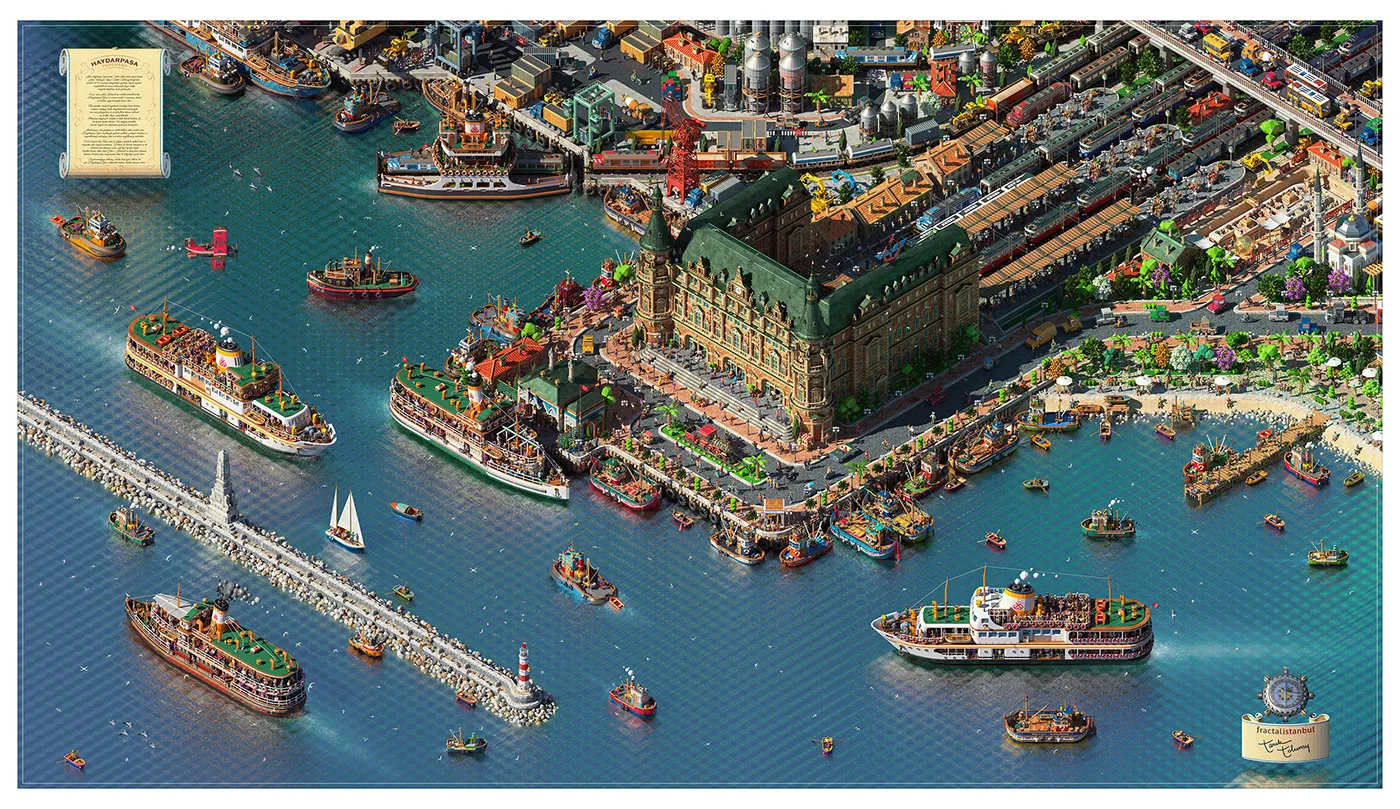As you know, in our newsletters, we’ve previously shared relevant content about a concept that has intrigued decentralized internet enthusiasts in recent years and has even become a significant topic for those not involved in this area. It’s a concept we’ve become familiar with due to its frequent mention.

Tarık Tolunay — Fractal Istanbul — Haydarpaşa Panorama
In this issue, we will strive to understand NFTs better. Together, we will grasp the essence of the matter so that we can advance in this field later on. Our goal is for anyone, including our mothers, to comprehend the topic. Additionally, when asked “What is an NFT?”, we wanted to contribute to the plethora of articles out there in our own style. Therefore, after reading our newsletter, you can summarize the topic for your friends who want to learn more and recommend our newsletter to them.
Just as some words and abbreviations are not suitable for use in our language, this concept is similarly challenging. This can make an already abstract idea even harder to grasp. Starting with the concept itself, the term NFT, which stands for Non-Fungible Token, actually means a token that cannot be replaced. To better understand the concept of “fungible,” which means replaceable, we can think of banknotes as an example of values that can be exchanged. A banknote can be replaced with another of the same value, serving as an example of a replaceable value. However, you cannot replace a work of art in the same way you can replace a banknote without leaving anyone disappointed. Leaving someone disappointed would be the least of your concerns!
Just as you are a unique and invaluable entity for your mother, NFTs are unique and invaluable entities for their creators and everyone else.
The value of NFTs can be determined similarly to how we decide the value of a work of art. These reasons may be logical or illogical. NFTs that might seem meaningless or without any apparent reason for value can, like art, hold very high values. This concept, which we’ve just started hearing about and which can be perceived as an investment, has become widespread with the news of absurdly priced NFTs, as we’ve seen in recent years.
We can actually view NFTs as digital art pieces. They gain value through their creators, regardless of their appearance, just like works of art. Just as we cannot replicate valuable paintings bought at auctions and sell them for similar prices without committing a crime, NFTs represent a concept that allows digital art and any type of content to be perceived in this way in the digital world.
In other words, an NFT, much like a work of art, is as valuable as the amount the next buyer is willing to pay.
So how is this uniqueness ensured?
To explain with a story, imagine you are an artist and you make a short film. We use the short film example because you can turn any content you can store online into a digital art piece. It could be a drawing, a song you sing, or a podcast you record. Even a tweet, as you know, can be turned into one!
Speaking of tweets, Twitter has announced its first basic level initiative towards NFT technology and industry among social media networks. By allowing users to link their crypto wallets to their accounts and use their NFTs as profile pictures, the company has introduced this new feature, currently available only to paid Twitter Blue subscribers.
Returning to our topic, you need to upload your work so that it is linked to a server where it will be stored online. Don’t let this sound complicated; you do this all the time! When you share a photo on Twitter, you are actually uploading that photo to a server provided and controlled by Twitter. This server can also be yours, ensuring your work does not get lost, or you can complete the upload through a trusted platform. Thus, your work begins to exist in the digital realm. You can also turn existing digital content into an NFT this way.
The next step is to prove the uniqueness of this work and obtain its certificate. This uniqueness certificate is provided by the blockchain. In an ecosystem where smart contracts can operate, such as ETH or AVAX, you ensure that your work’s link is on the blockchain by fulfilling the ecosystem’s requirements. Essentially, you create a token and ensure that information about your content is included in this token. This action is, of course, recorded on the blockchain, including the date, and securely stored. You can then sell this tokenized work or keep it in your wallet forever.
This means that the blockchain does not fully carry your art or content. You simply encode the necessary link to this token and obtain a kind of authenticity certificate with the help of the blockchain.
The varieties, potentials, habitats, economies, future, and more of digital art pieces, i.e., NFTs… In our next issue, we will address these topics and appeal to the neurons of readers who want to delve deeper into this field.
If you want the Decentralized Newsletter, which covers various topics of the decentralized world, to drop into your inbox every week, you can subscribe by visiting the address you will see shortly: bit.ly/merkezsizbulten



Leave a Reply